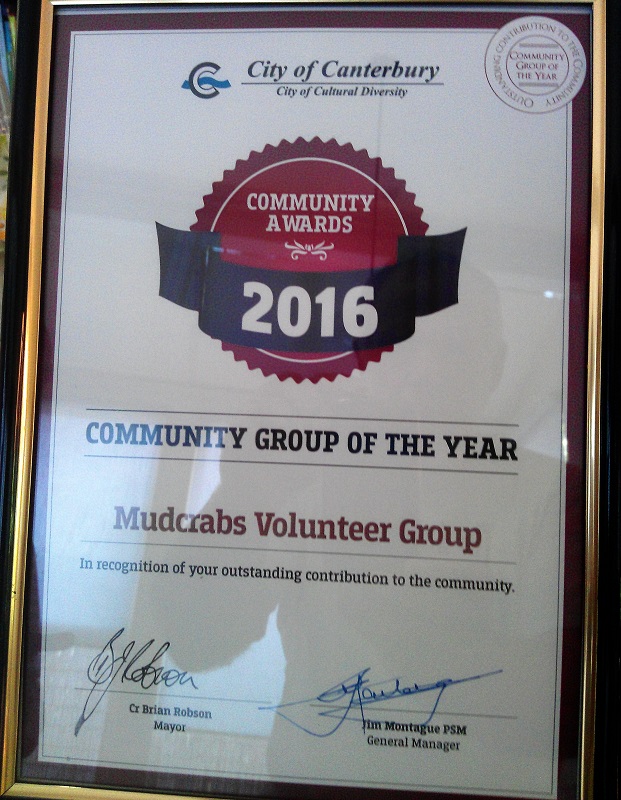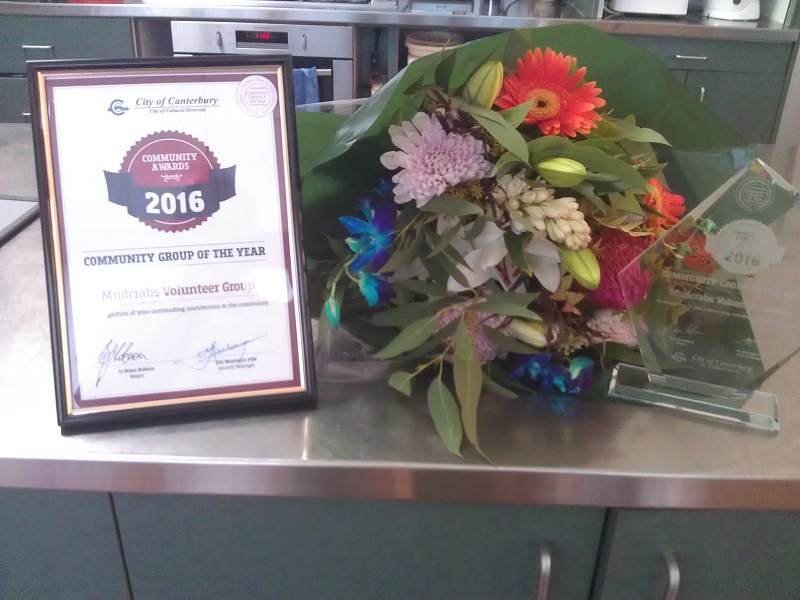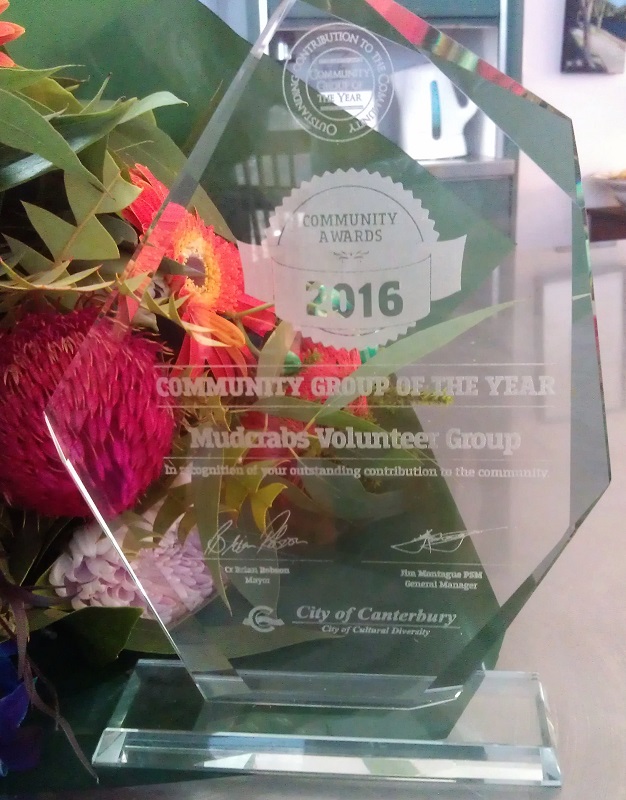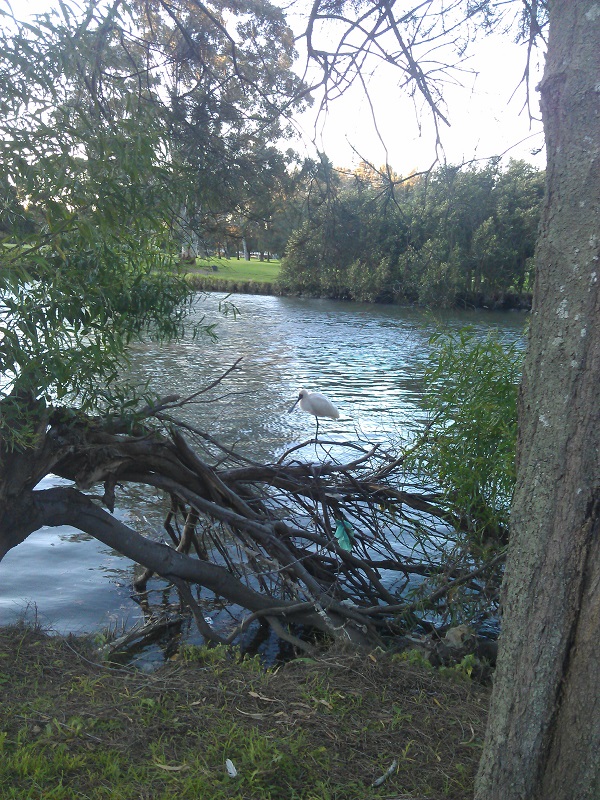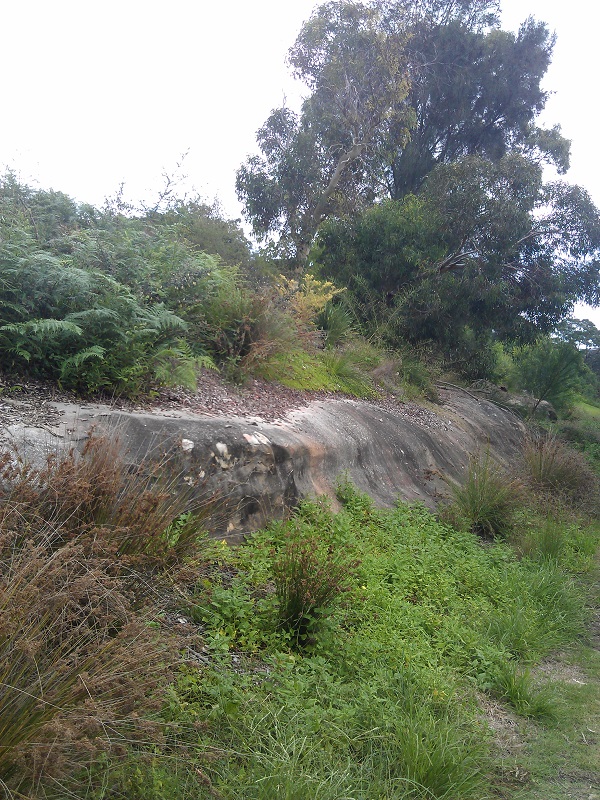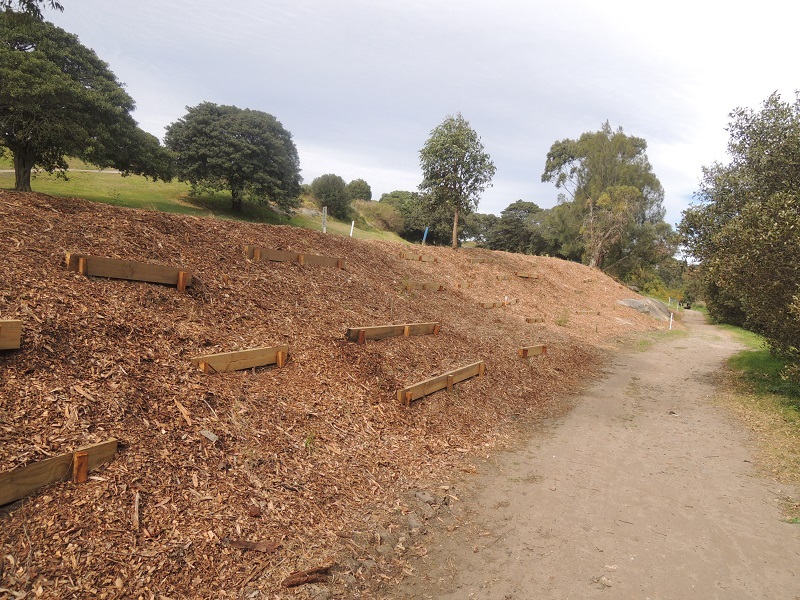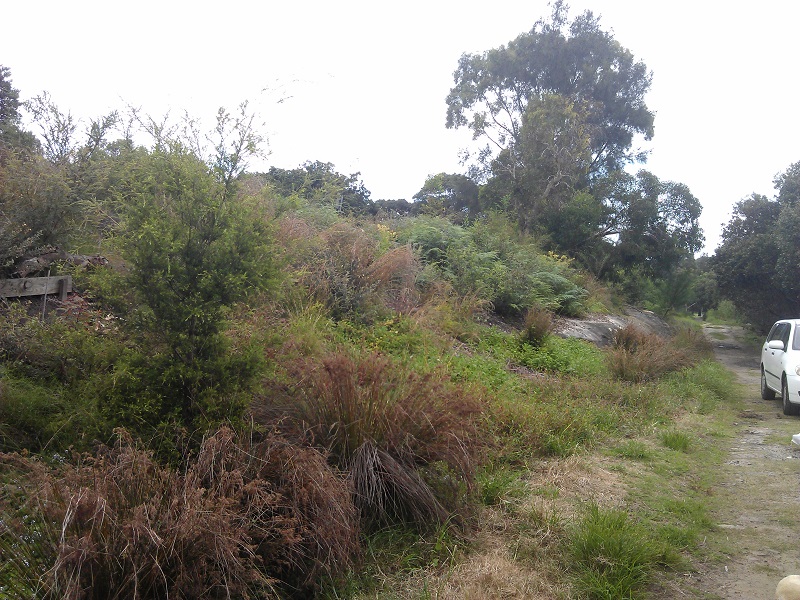| A few of the Mudlarks group asked about the origins of the Cup & Saucer Creek wetlands. It didn’t exist in 2010 but came about from a cooperative effort of Sydney Water, The Catchment Management Authority, local residents and The Mudcrabs. Attached is an overview of the wetland project. The area now hosts breeding by a number of waterbirds – Dusky Moorhens, Pacific Black Ducks, Purple Swamphens, Ibis, Grey Teals, Chestnut Teals among others(including Long-necked Turtles and the occasional Echidna). The area has been transformed into a very productive water bird breeding habitat. Great work! |
Category Archives: Other
Mudcrabs Calendar : 2H/2024
Featured
Download the calendar of Mudcrabs events: July to December
What’s on this month
Transforming Australia’s Rivers
2022: Mudcrabs make the news again! Click to view original article.
A recent AAP article was published on the continuing efforts of The Mudcrabs to restore the health of the Cooks River. The photo is from a recent Mudcrabs working bee in the Southbank site alongside the Cooks River at Earlwood
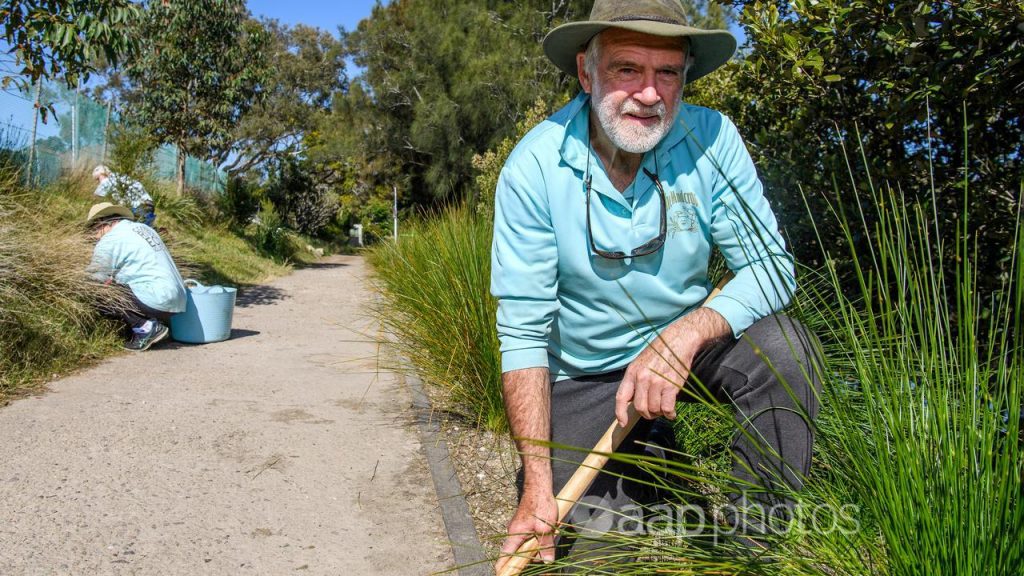
Transforming Australia’s urban rivers
Jacob Shteyman October 8, 2022
Along the banks of Australia’s most polluted urban river, a different species of mudcrab scurries along the flats.
Named for the plastic pincers they use to pick up rubbish, a 600-strong clan of eco warriors, aka The Mudcrabs, is comprised predominantly of retirees from suburbs surrounding Sydney’s Cooks River.
Peter Munro, 73, helped found the landcare group 20 years ago and has seen a dramatic improvement in the river’s health.
“At different points on the river you could once almost walk across the floating litter,” he told AAP.
The Cooks (as locals call it) has been notorious as a toxic sewer, its 23 kilometres snaking brown and murky past residences and industry from its source in the southwest to its artificial mouth at Botany Bay.
The work of the volunteers in restoring the watercourse to its natural state has brought wildlife back to its banks, once dominated by endangered ironbark forest.
One of their successes is the revitalisation of wetlands at Cup and Saucer Creek – formerly a barren concrete drain that now houses native animals and filters stormwater of harmful chemicals.
Mr Munro, who lives two blocks from the river, runs a survey of different birds spotted returning to the renewed ecosystem. The most exciting finds include tawny frogmouths and honeyeaters.
Urban rivers are “massively important” refuges for animals, University of Queensland conservation ecologist Michelle Ward says.
“(Rivers) often meander through cities connecting urban ecosystems like floodplains and wetlands but also nature reserves and parks, all of which play a vital role in threatened species recovery,” she says.
The federal government’s latest State of the Environment report, published in July, highlighted the importance of waterways to the myriad species living in the middle of large cities.
It found 46 per cent of Australia’s threatened species inhabit towns and cities, with several solely reliant on urban river ecosystems.
The western swamp tortoise, Australia’s most critically endangered reptile, was once found in swampland throughout central Perth but overdevelopment has reduced the tiny terrapins to just two populations.
In a recent report card co-authored by Dr Ward for WWF, Australia was given an F for species conservation.
But not all is lost, she says.
Protecting habitat from destruction and filtering pollution out of stormwater drains are crucial but communities can also make a big difference.
“Spaces for urban conservation don’t have to be large. Even if it’s just one old tree on a riverbank that can be a lifeline for many different species,” Dr Ward says.
Having grown up on the Macquarie River in central western NSW, Wiradjuri woman Jennifer Newman struggled to feel the same beloved connection to the Cooks, constrained, as it is in part, within concrete walls.
“When you grow up in a town on the river bank you learn to swim in the river, you fish in the river, you walk along the river,” she says.
“The river is a constant presence in your landscape, in your sense of country.”
Now an executive of the Cooks River Valley Association, Ms Newman believes conservation groups give residents a sense of custodianship over the river.
“It’s a breeding ground, it’s a home, it’s a protection zone. It’s what waters the trees and shrubs and bushes,” she says.
“As we become more tuned in to the growing population of non-human residents we are more able to understand this watercourse to be a living river rather than a drain.”
The Gameygal, Wangal and Cadigal clans had stewardship of the land prior to colonisation and their culture lives on through practices like the Blak Markets ceremonies held at La Perouse to guide whales as they migrate up the NSW coast.
Ms Newman considers the Bare Island ritual a reminder of humanity’s involvement in the whales’ journey.
Everyone has a responsibility to ensure the water that washes off their properties, down the river, into Botany Bay and out to the whale lines is free of chemicals and waste so they continue to come back, she says.
The Mudcrabs carry on this practice of stewardship by using Indigenous-grown seedlings and harnessing traditional planting techniques to revegetate the riverbanks.
More than just healing natural ecosystems, rivercare groups are improving waterways for their human inhabitants as well.
At Deep Rock pool in Melbourne’s inner city, locals brave the frigid, murky water to take a plunge in the Yarra River. Decades of work have gone into reducing pollution and making it safe to swim, although it is still not recommended in the CBD.
Formed during the city’s COVID-19 lockdown, when locals rediscovered neighbourhood parks and waterways, environmental alliance Regen Melbourne plans to make all of the Yarra fit for a dip by 2030.
Mr Munro still hopes one day people will be able to swim in the Cooks River but knows that might be hard to achieve.
In the meantime, he’s not sitting idly by.
“The river is such a unifying bit of geography,” he says.
“It really gives you the drive to bring it back to health.”
Wildlife on the Cooks River
Here are 2 videos produced by Mudcrabs members that highlight some of our remarkable local wildlife.
Birds of the Cooks River
Below is the Mudlarks presentation delivered at the CRVA meeting on the 15th February 2022.
The Mudlarks is a group of Mudcrabs that conduct a regular survey of birdlife along the Cooks River. The group meets at 7am on the second Tuesday of each month and performs a 90 minute loop walk while recording species spotted, count and any nesting activity.
The group now has 3 years of observations and data and the presentation covers these.
It also includes a segment with some amazing birdlife photography by David W. Noble.
If you are interested in attending one of our regular bird surveys please take a look at the 2022 calendar for the schedule or send an email to mudlarks@mudcrabs.net.au
Cooks River Wildlife
This video was compiled by one of our Mudcrabs (Martin Puchert) and highlights how rewarding observing the wildlife along the Cooks River can be.
Martin shares his insights and approach – a highly entertaining and educational video.
Mudcrabs awarded Community Group of the Year
Birds of the Cooks River
An interesting gathering of birds yesterday on the Cooks River.
A great egret and a little egret were fishing side by side…
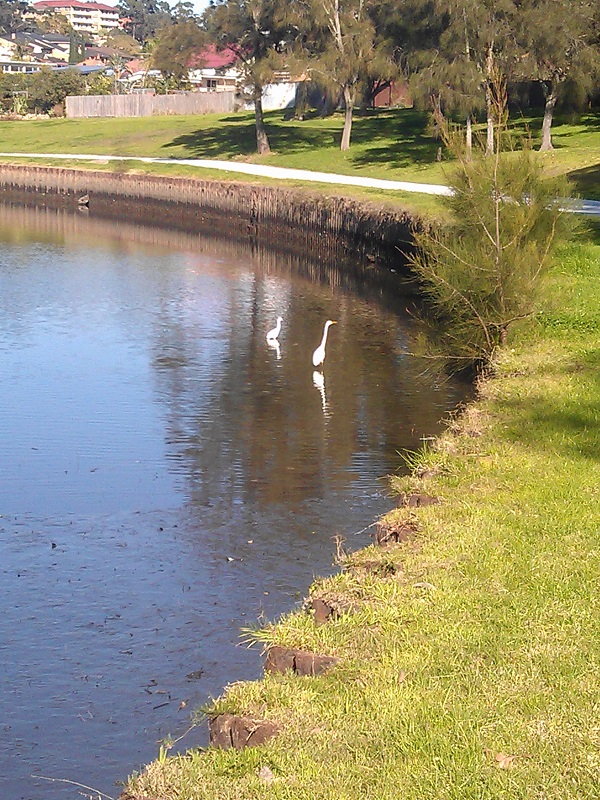
The great egret leaves, while the little egret continues to fish…
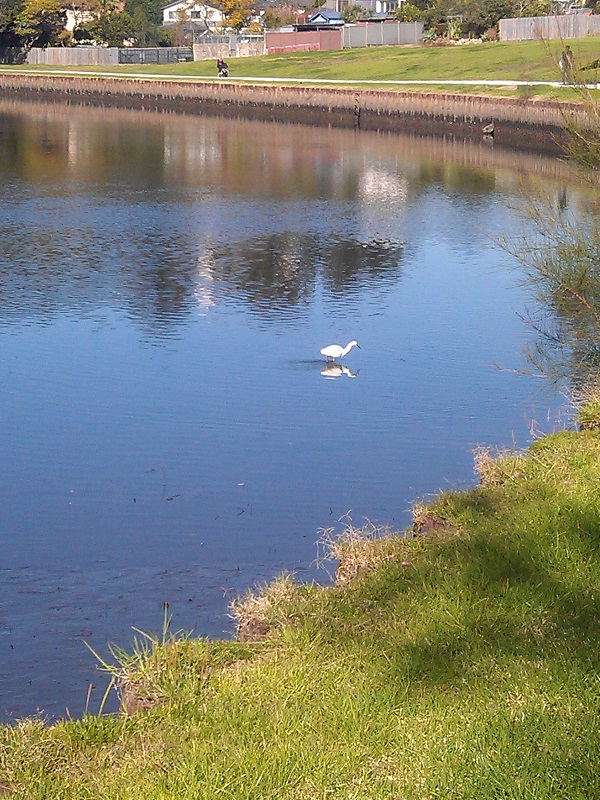
A royal spoonbill joins the little egret and they resume fishing..
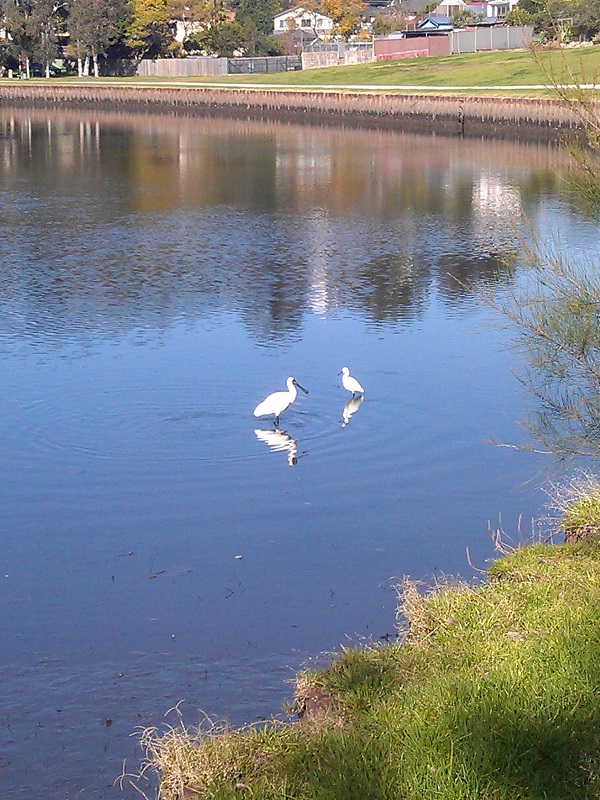
The little egret leaves and the spoonbill walks off up river
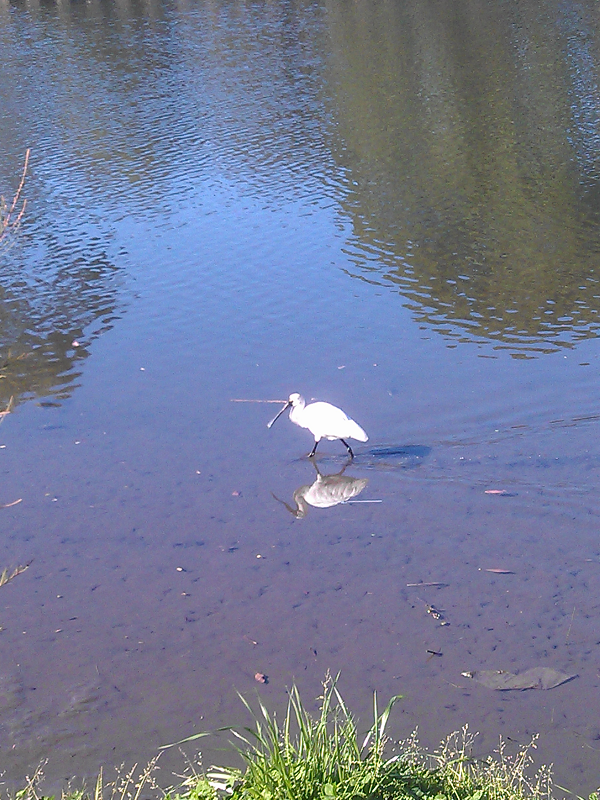
What a great river!!
More royal spoonbills on Cooks River
Mudcrab spotted on Norfolk Island
Local Mudcrab Brent Jones recently traveled to Norfolk Island to assist with some serious noxious weed removal. Click on the link below to see more of Brent’s visit to Norfolk Island.

